Do you ever watch children play? How they get totally engrossed in the action, oblivious to the rest of the world, creating one of their own? How their capacity of joy is simply unexhaustable?
This week, we are going to be dedicating to focusing on capturing our children play outside, specifically focusing on the opportunitoes provided by playgrpunds, playground equipment and ANY structures that our children may use to play or interact with.
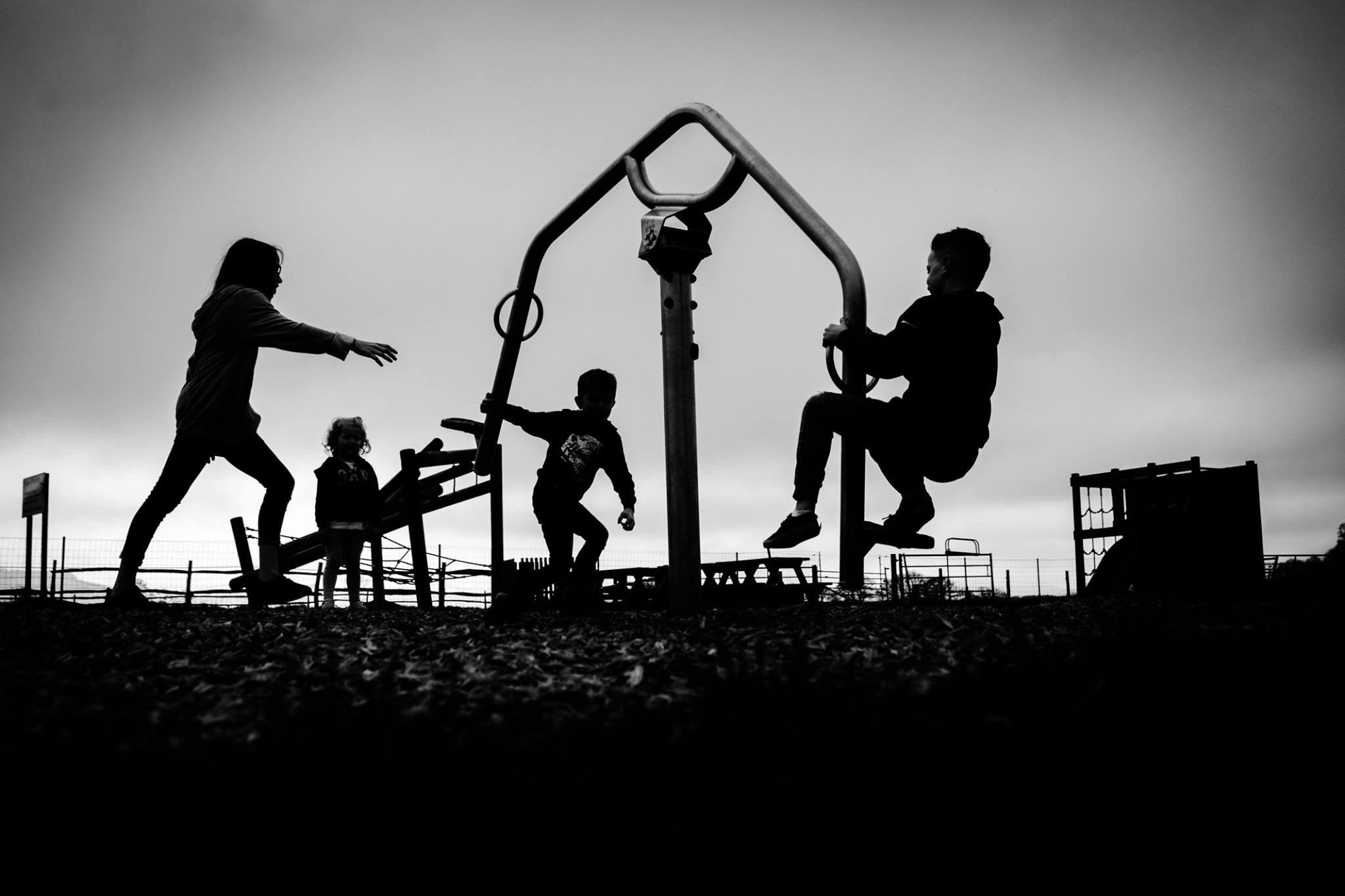
Photo by Lisa Friday
And while we're doing that, we'll be exploring a few different composition principles and pay attention to our shutters ( to make sure we catpture them nice and sharp)
But before we dive in, here is a question I am often asked in the context of children's photography:
Can I take photos of my children at playground, and have other kids in the photo?
I can see where the question may be coming from - we are all very protective of our kids, we are vigilant to any untowards actions by strangers, and we want to give the same curtesy to other people's kids.
Many people believe that you will need their consent before capturing a photograph containing their likeness or that of their children. That's not the case.
What does the law say?
When you take photos of your kids, other things and people who are occupying the same public space as you can be legally photographed. There are no laws preventing photography of people, children, buildings, objects or anything else in a public place, or in any place open to the public where photography is not expressly prohibited. There is no expectation of privacy in a public place. There are no separate laws for minors even though some venues, schools and childrens’ sports centres may choose to restrict photography at some events.
Just to be clear, this relates to the laws of the UK, if you're reading it elsewhere in the world, other laws may apply.
What cannot you do?
The key word here is Public - people in public can be photographed because being out in public makes theire presence, well, public. As long as you don't harrass anybody or attemp to take photos of kids or other people in private ( which I don't expect you do!) or in any situations that may be considered indecent ( and I absolutely hope that would never be the case for you!), you are within your rights to take the photos.
You also don't technically need anybody's permission to publish said photos - on social media or otherwise, although if you want to sell them, you will usually require a Model release from any person prominently featured in your image.
RESPECT.
So that's the law, but then there is simple politeness and respectful conduct - and these would dictate that if you are taking photographs at a playground, you should stick to making your own kids the focus of a photograph. I always strive to focus my photos on my children only but if I were confronted by another parent concerned about their child being in the photographs, I would ALWAYS comply with their requests to remove a photograph while at the same time making it clear that I am doing so out of respect and not a legal requirement.
I hope that clarifies some of the many myths and confusion around photos and the public domain. Now that we've cleared all that up, let's think about what you might actually want to photograph!
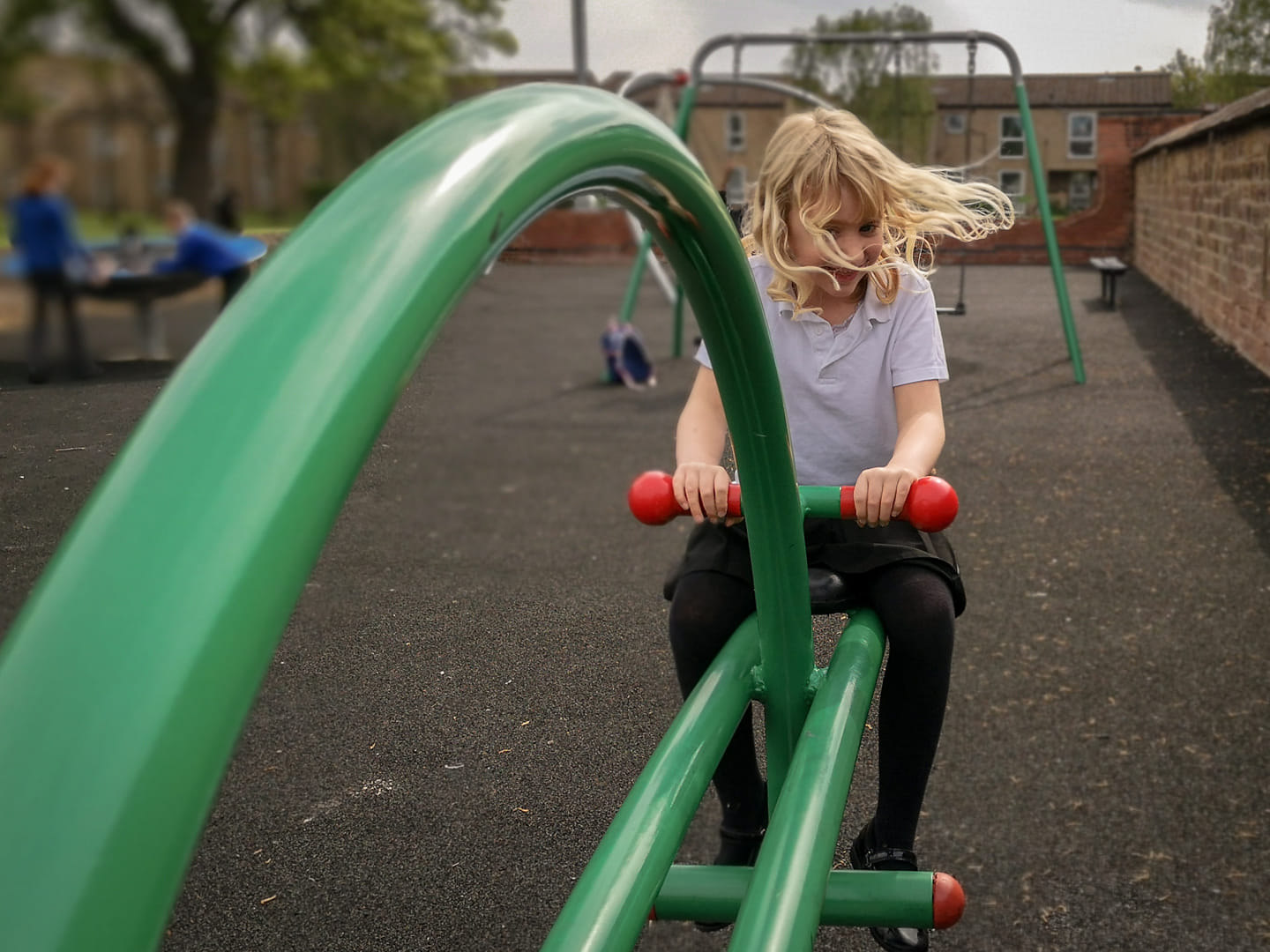
Kids at a playground - gravity and speed
My daughter's most favourite thing in the world is being on the swings. Something about testing her own gravitational pull at what seems like a break neck speed appears to be all that is needed for pure happiness.
So when you photograph your kids on any of the moving playground equipment, speed is the key word for you.
More specifically - your Shutter speed.
If you're unfamiliar with the term, it's essentially the time it takes your camera to fill its sensor with light and take the photo. Fast shutter speed means you take the photo faster, the camera most likely to freeze the movent. This is what you want when it comes to catching your child run, jump, twirl, scoot etc really sharp - freezing them in motion.
We would class fast shutter speed as being usually above 1/250s ( that's fractions of a second) but higher is even better for capturing movement - most cameras will go as fast as 1/2000s or even 1/4000s. A word of warning though - unless you are out in bright sun, don't push it quite as high or you're struggle with light. Usually 1/500s or 1/800s will be perfectly fast for what you want ( that's being outside, indoors, with limited light, you will need to slow your camera down considerably)
Slow shutter speeds have a different effect on your subject - with slow shutter speed, the camera takes longer to record a photograph, so it also records any movement that occurs in that time.
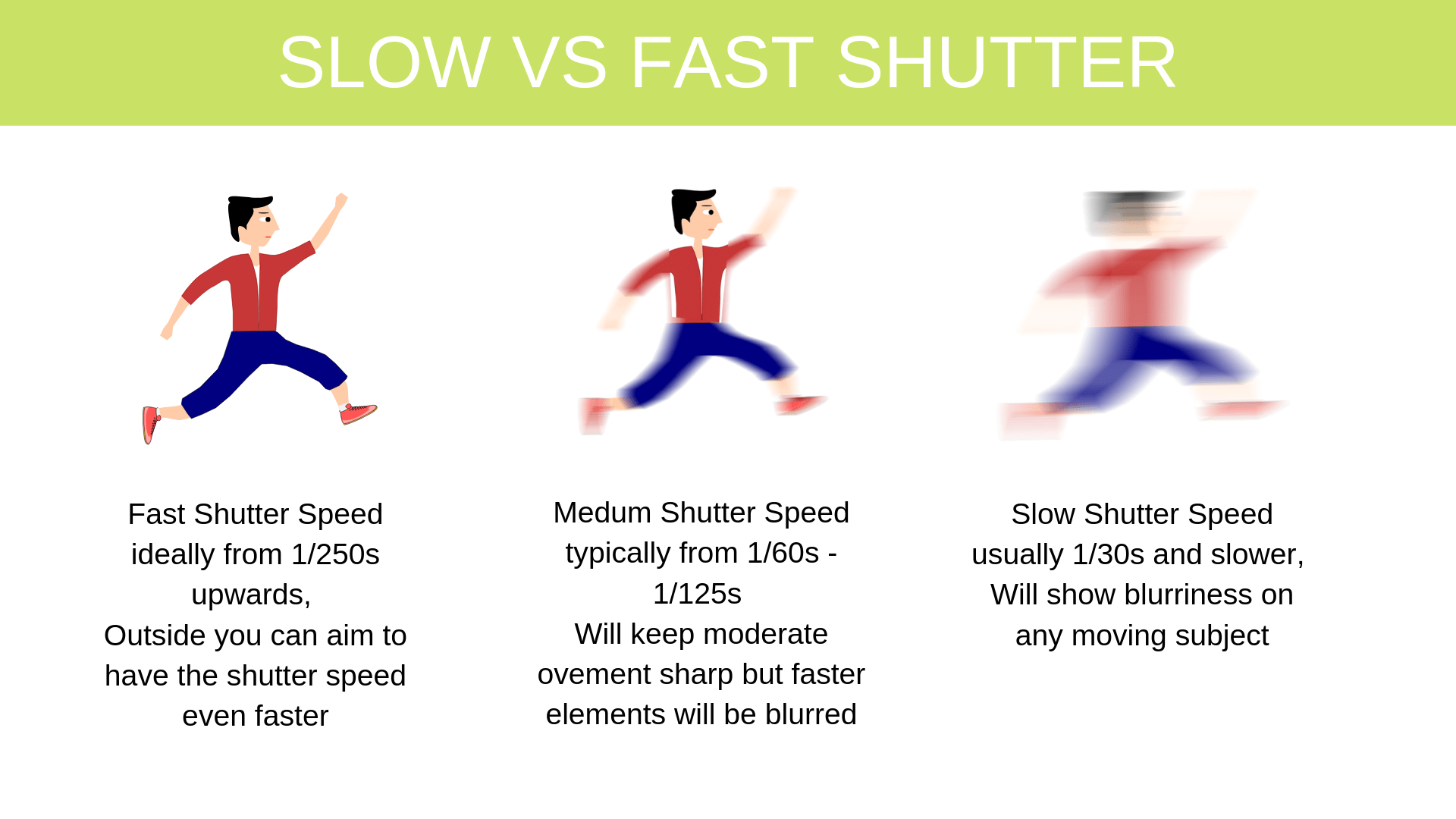
But the difficulty with capturing movement is not only about doing it fast enough. Ats also about having your camera focus at speed in the right place.
Focus for Movement
Most, if not all cameras these days have a dynamic focus mode which is capable of tracking your subject movement. It will come under different names - typically AI-Servo ( Canons) , AF-C or Continuous, or Tracking on other camera brands. There is not enough space here tofully explore it ( we dedicate a good chunk of our Fundamentals course to exploring and practicing focus) but just know this - by setting your focus on that setting, you will be telling the camera to 'attach' itself to your subject and follow its movement, thus giving you more opportunity to actually capture your child in motion SHARP.It is not foolproof - if your subject is moving fast or you're too close, or the movement is not predicatable - your camera may still struggle. When it comes to focus, not all cameras are created equal - in order to acquire focus, and then track it, your camera is being a little computer, performing complicated algorithm calculations go get you there. And as with 'proper' computers - some will be better and faster at it, and some not so much.
Let's talk composition
Playgrounds provide ample opportunities to get creative with your composition. While we don't have space here to address Composition as a full topic here ( we do spend a lot of time on it in our full courses) I just wanted to talk to you about two composition prompts which you'll find aplenty on a playground.
1. Frame within the frame
The premise for this is super simple - find or create something that will encircle ( en-square? en-triangle?) your subject to draw the viewers eye to it. Think of it as putting a highlighter circle around a word in text - the eye goes straight there, doesn't in? And with playgrounds and numerous things there that kids can go grough ( like tunnels) , peep through or simply be framed by, the opportunities are endless.
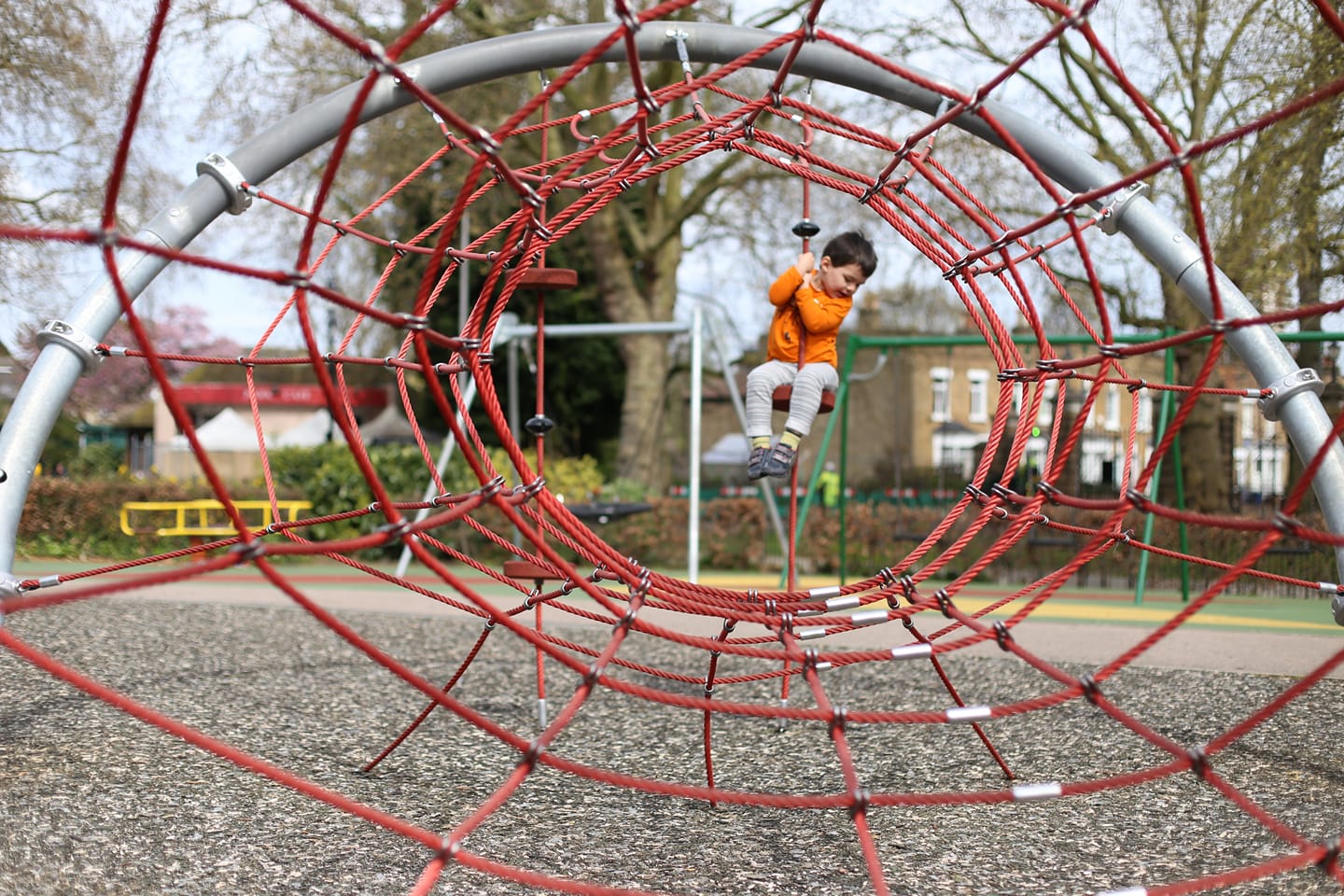
Photo by Sarah Gannon
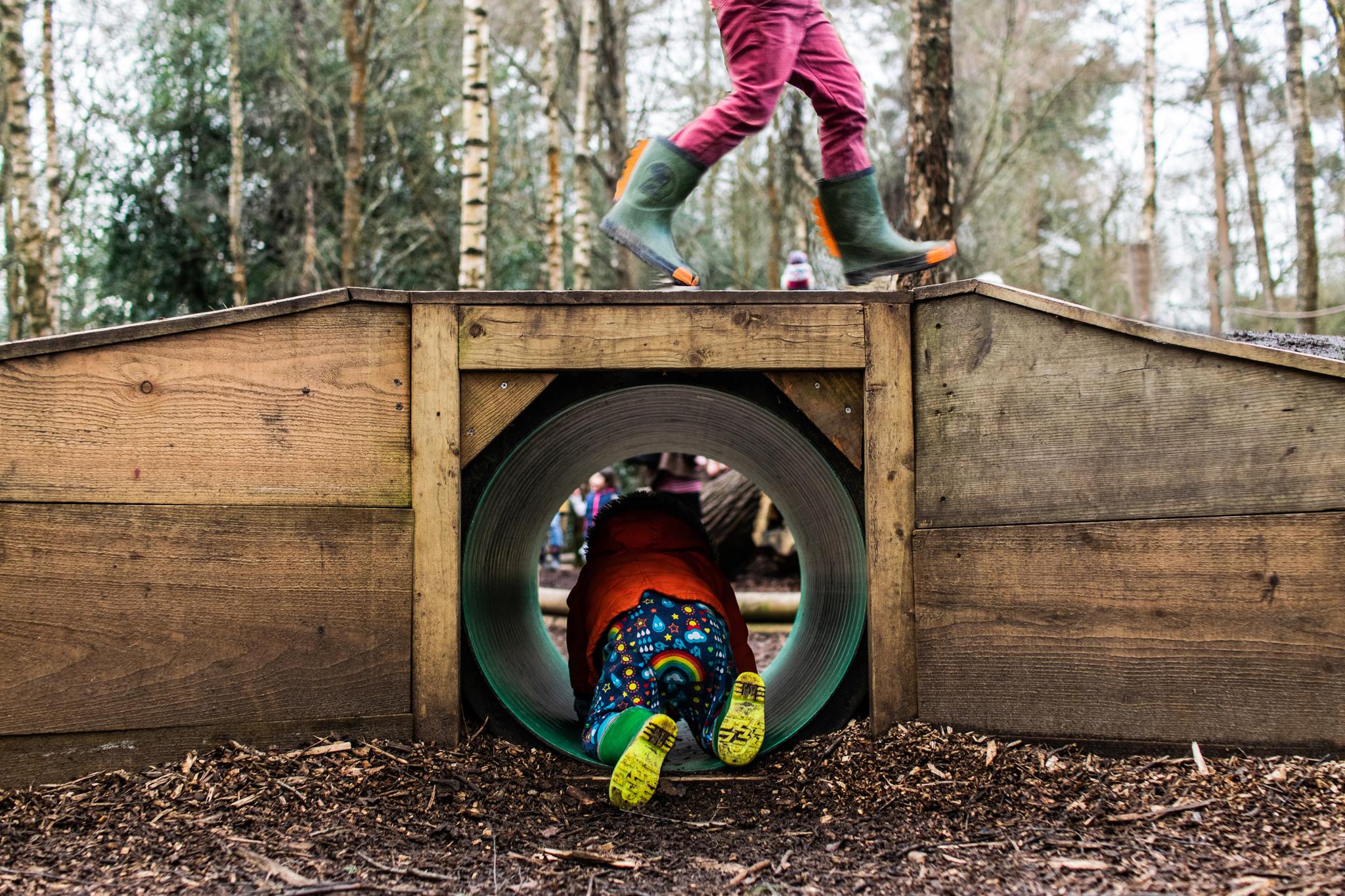
Photo by Hannah Slater
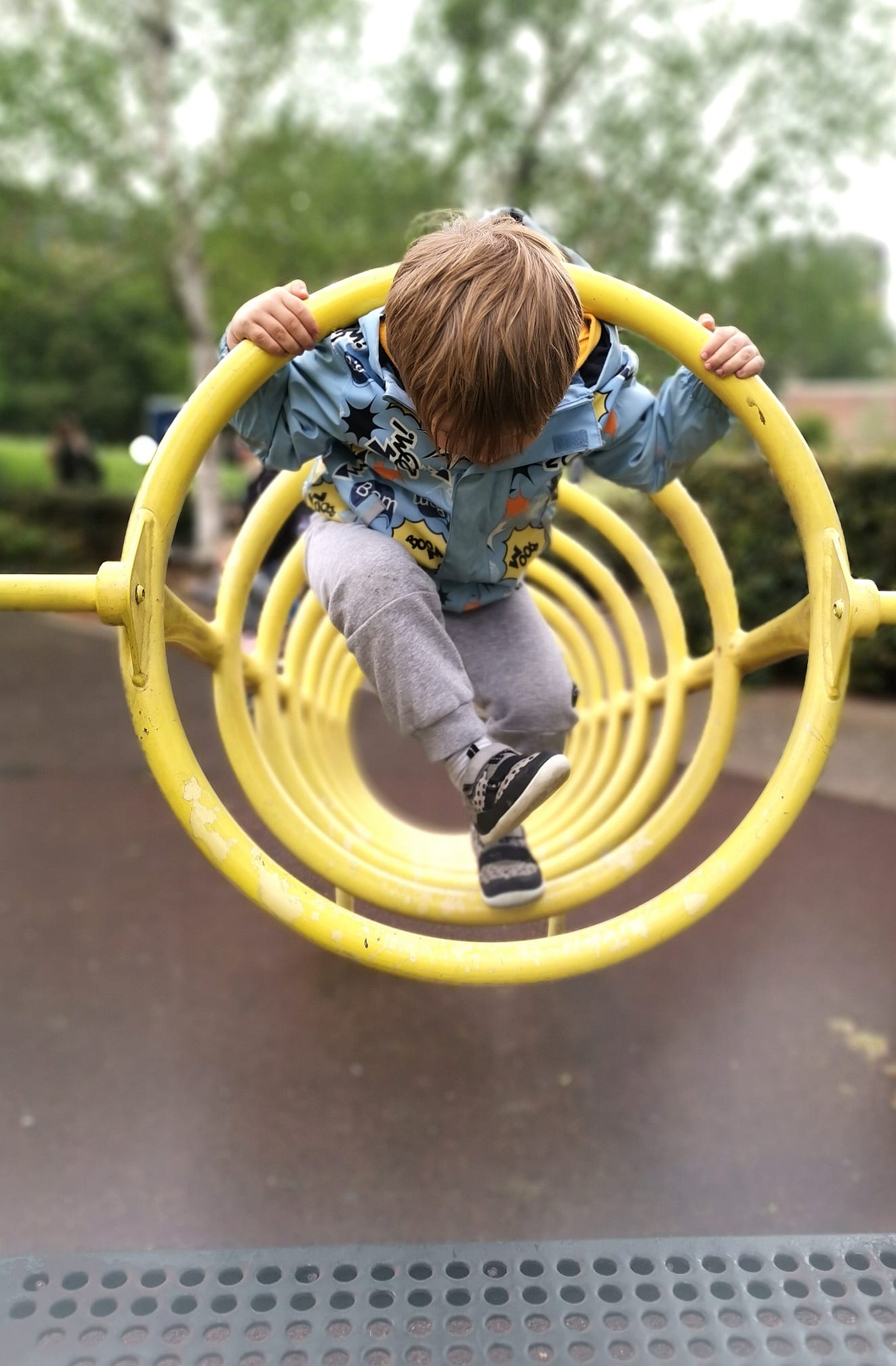
Photo by Laura Collard
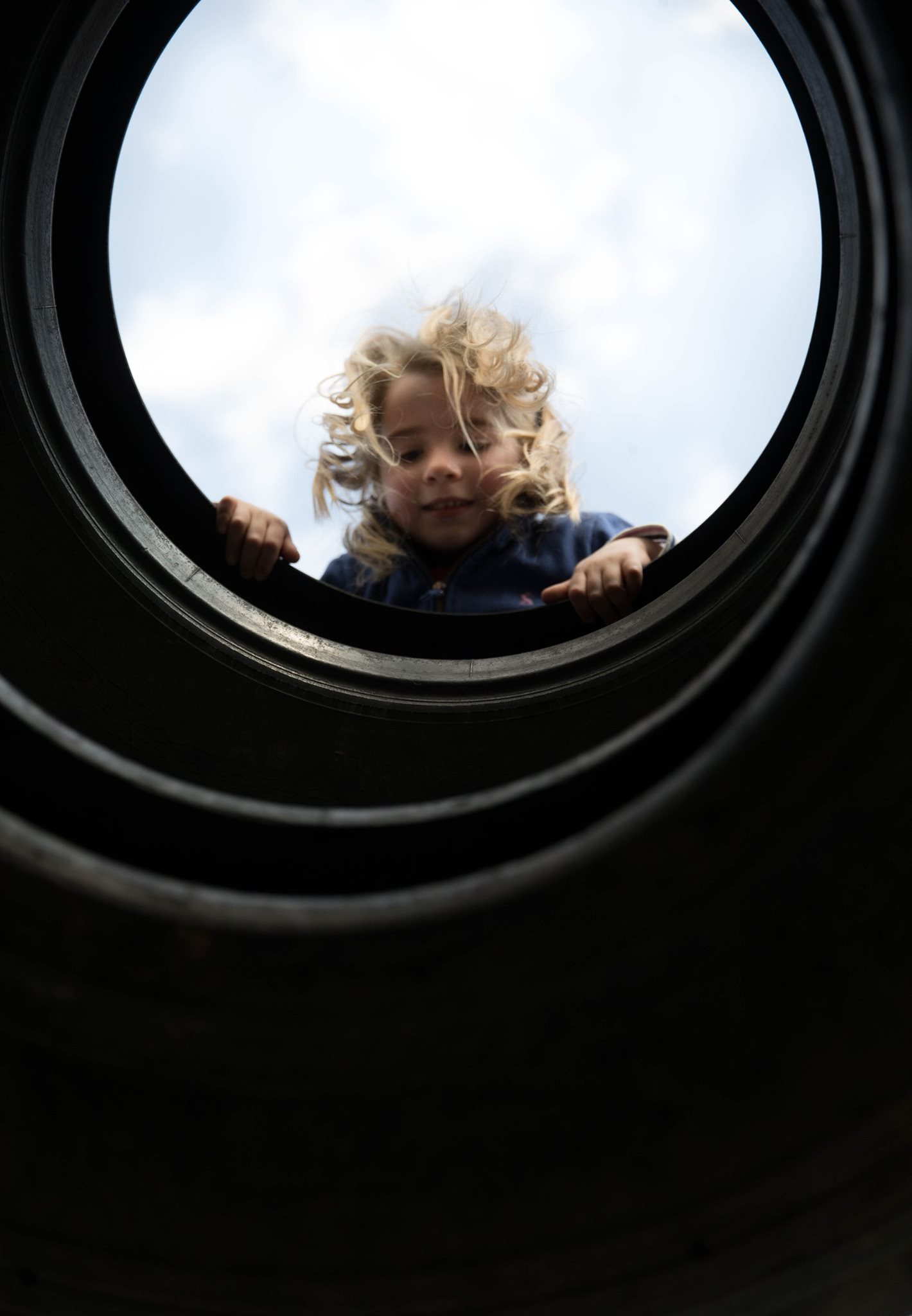
Photo by Allie Bigwood
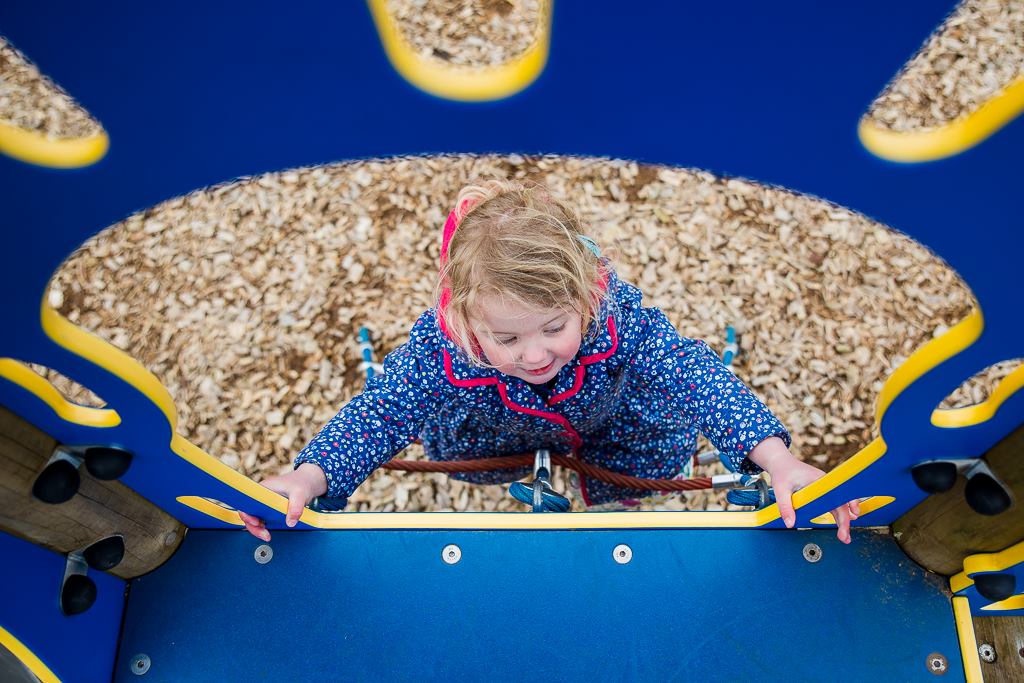
Photo by Teresa Foyster
2. Leading lines
Us humans, we're suckers for being told what to do. That includes our eyes. We just can't resist being directed places and there is no better way to do so than by following a line.
And with playground, lines are aplenty and you can use them to strengthen your composition and draw the eye directly to your subject.
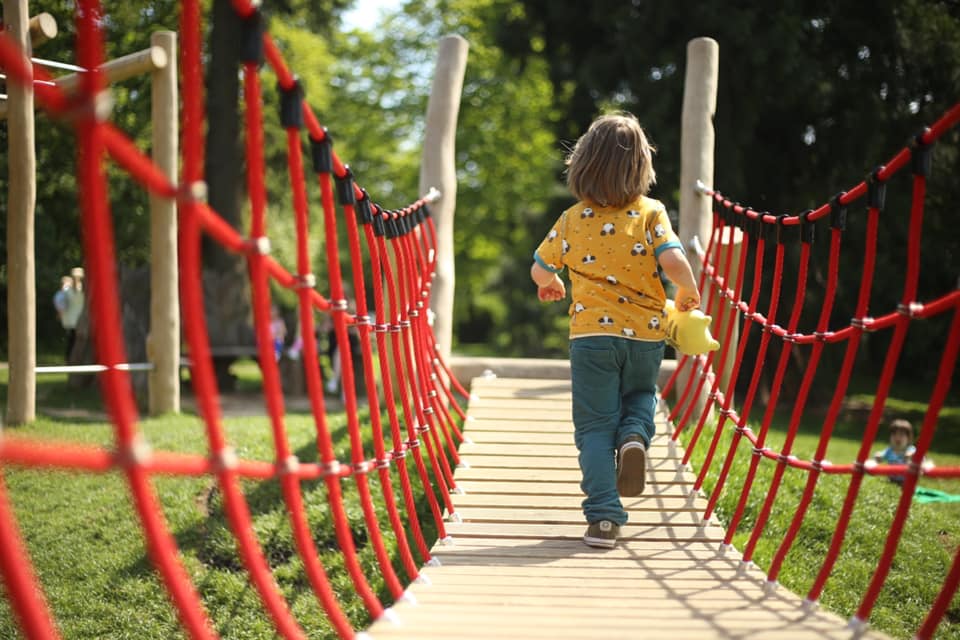
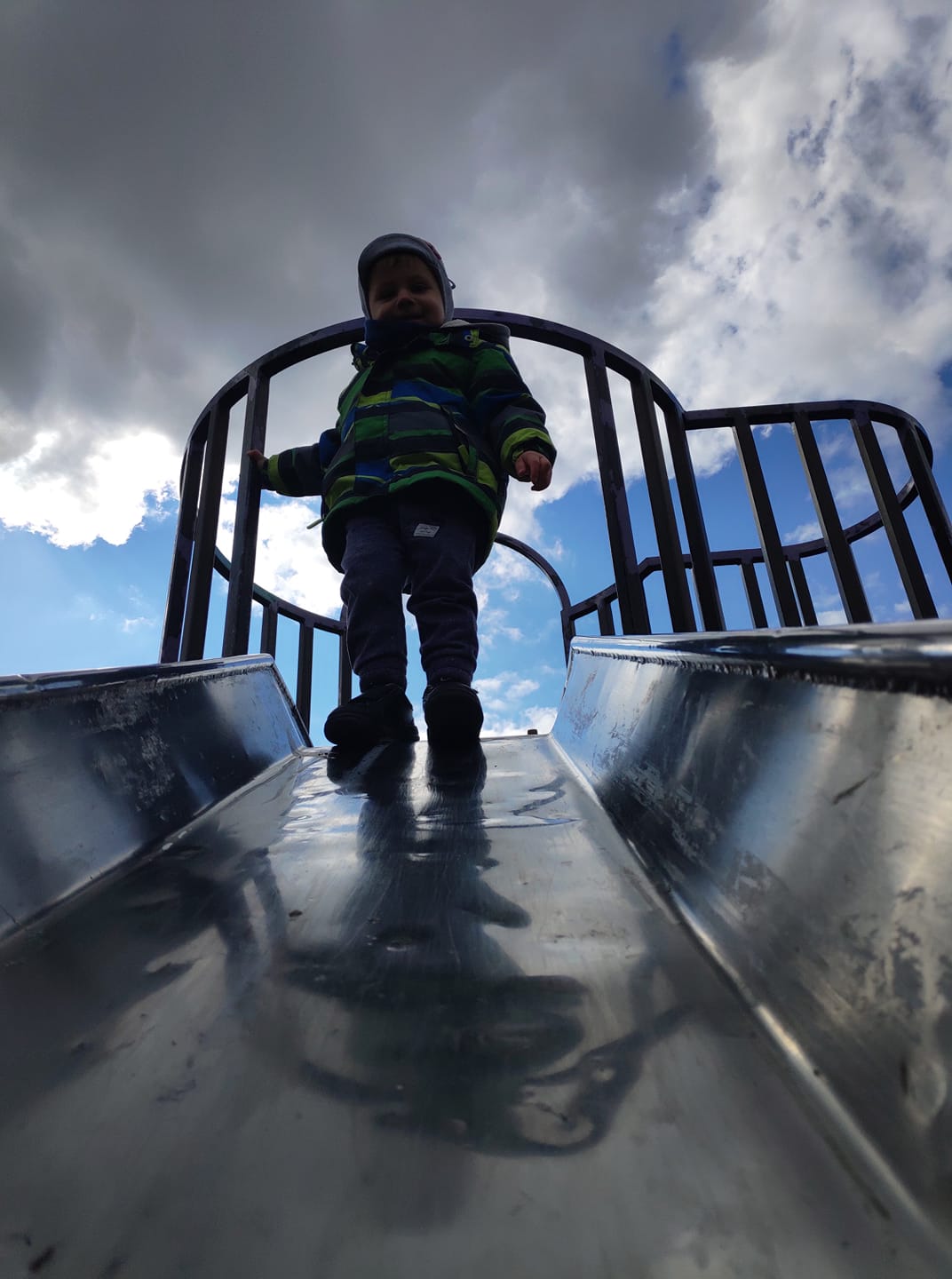
Lesson 4 Challenge
Make your way to a playground and capture your kids having fun on the play equipment! Pay particular attention to seeing lines and frames!
No play equipment open or available where you are? Kids to young to go on swings and roundabouts? Just focus on finding leading lines and frames instead.
OUR COURSES : BUT WILL I IMPROVE
Ah, the question nobody asks outloud but everybody is consciously wondering. You may be wondering if something like our course is the right thing for you. Will you be able to follow? Will you be able to transform your photography? Will you still benefit if you've already had some prior photo knowledge?
The answer is an emphatic yes. We say that because we see it with every single new group that starts. When you learn how to use that awesome tool of yours, the camera, when you learn how to see the world like it does, when you learn what things help in creating a strong image and when you learn our tricks for capturing children naturally, as they are, who they are, you can't not improve.
Did you know that the vast majority of photos featured in this bootcamp was taken by our students?
And since the proof is in the pudding, just see for yourself - here are some before and afters by our students, Mums and Dads just like you. And you can see even more of them here


